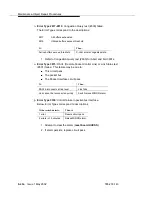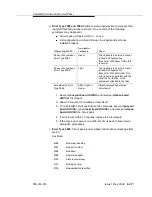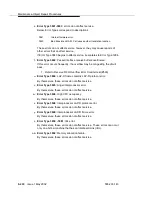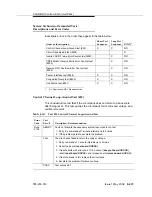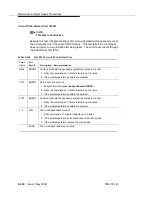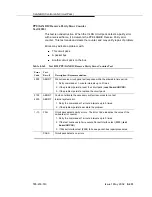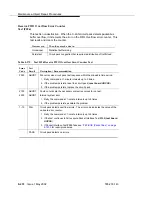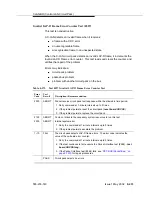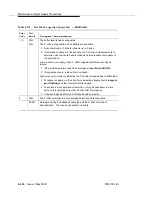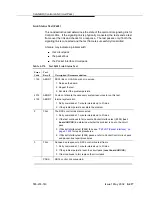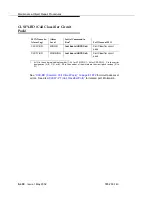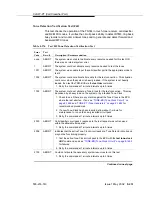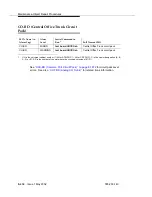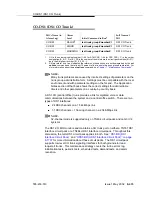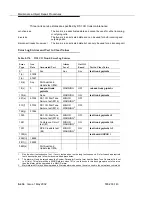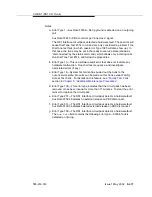
Maintenance-Object Repair Procedures
555-233-143
8-430
Issue 1 May 2002
Notes:
a. There are two possible alarm levels for this error type: MAJOR and
MINOR. A major alarm is raised if the total number of call classifier ports
currently in-service is less than or equal to 1/2 of the administered
threshold number. Otherwise, a minor alarm is raised. In either case, run
the short test sequence on the alarmed port and follow the error code
procedures for the individual tests.
The in-service threshold number for alarming call classifier ports is
administered using the change system-parameters maintenance
command. For details, see
Chapter 7, ‘‘Maintenance Commands’’
1. Issue these commands in order: busyout board, reset board,
release board. The board reset is required to reload on-board RAM
associated with the TN744’s DSPs. This takes all 8 Tone Detector
ports out of service for a few seconds. Only 4 of the 8 would be out
of service due to the alarm. (There are five Tone Detectors on each
of the two DSPs.) Other than the unlikely potential of running out of
Tone Detector resources in the switch, there is no other effect when
the board is reset.
2. Test the board (test board UUCSS long).
3. If the test still fails, replace the board.
b. The CLSFY-PT lost its translation. Testing the CLSFY-PT is sufficient to
reload its translation. If testing the call classifier port does not clear the
error, then the call classifier circuit pack containing the defective call
classifier port should be replaced.
c. This error indicates the call classifier port is having problems detecting call
classification tones or detecting and generating R2-MFC tones This is
usually accompanied by failures of some incoming or outgoing calls. If this
error type is persistently logged, then replace the call classifier circuit pack
containing the defective CLSFY-PT.
System Technician-Demanded Tests:
Descriptions and Error Codes
Always investigate tests in the order presented in the following tables. For
example, by clearing error codes associated with the Tone Detection Verification
test (#42), you may also clear errors generated from other tests in the testing
sequence.
Order of Investigation
Short Test
Sequence
Long Test
Sequence
D/ND
1
1.
D = Destructive; ND = Nondestructive
Tone Detection Verification test (#42)
X
X
ND
Tone Detection Audit/Update test (#43)
X
X
ND
Summary of Contents for S8700 Series
Page 50: ...Maintenance Architecture 555 233 143 1 26 Issue 1 May 2002 ...
Page 74: ...Initialization and Recovery 555 233 143 3 12 Issue 1 May 2002 ...
Page 186: ...Alarms Errors and Troubleshooting 555 233 143 4 112 Issue 1 May 2002 ...
Page 232: ...Additional Maintenance Procedures 555 233 143 5 46 Issue 1 May 2002 ...
Page 635: ...status psa Issue 1 May 2002 7 379 555 233 143 status psa See status tti on page 7 406 ...
Page 722: ...Maintenance Commands 555 233 143 7 466 Issue 1 May 2002 ...

